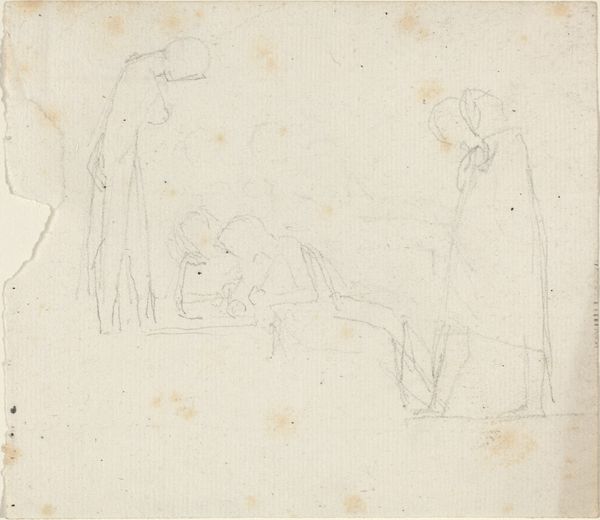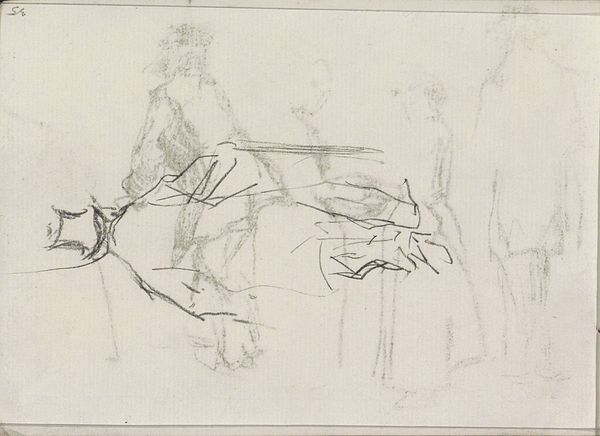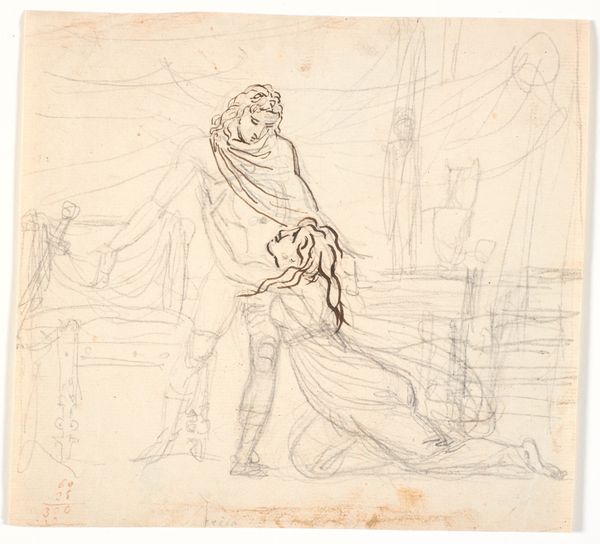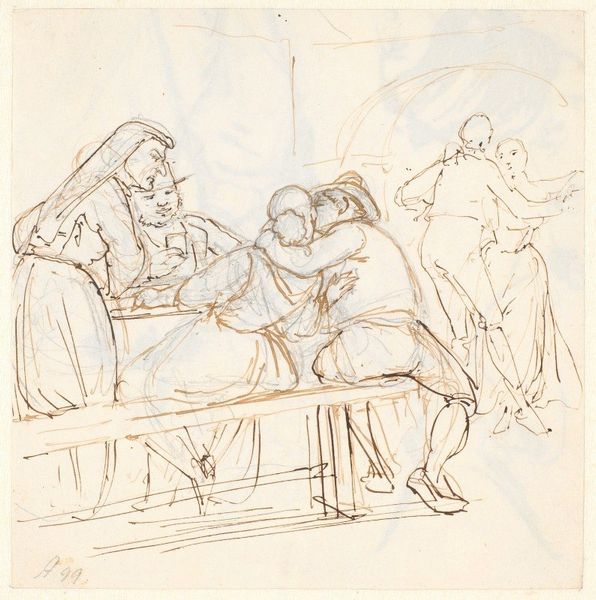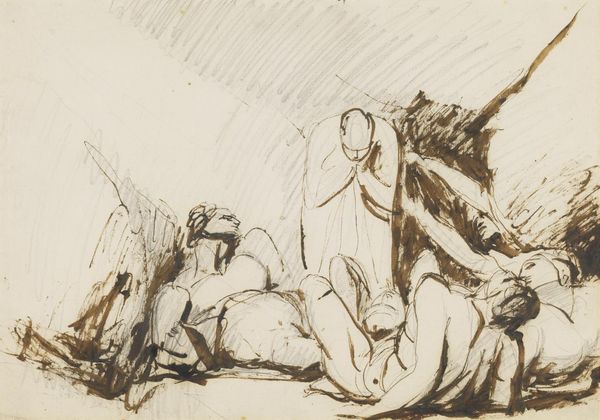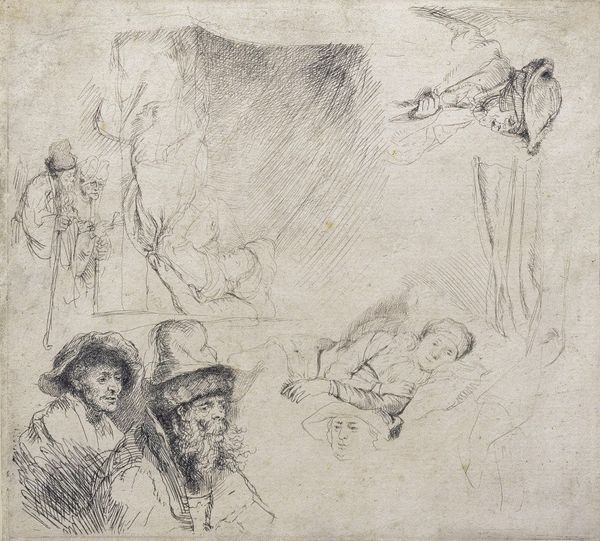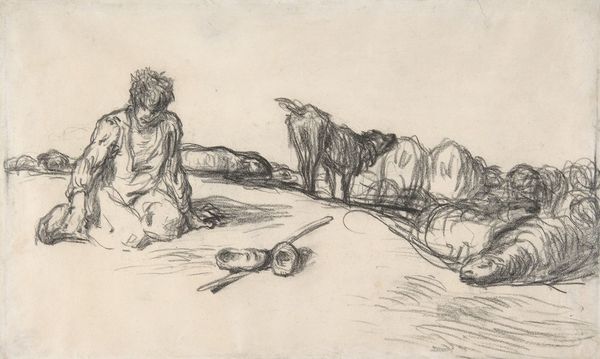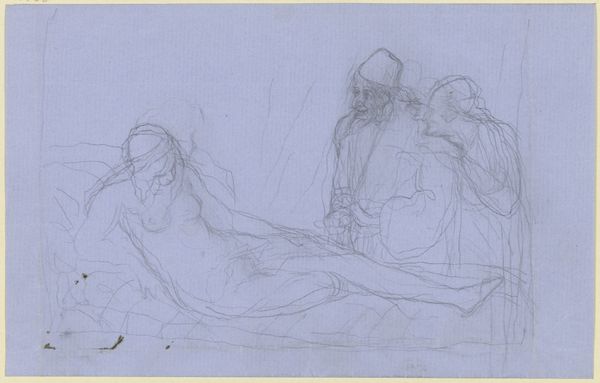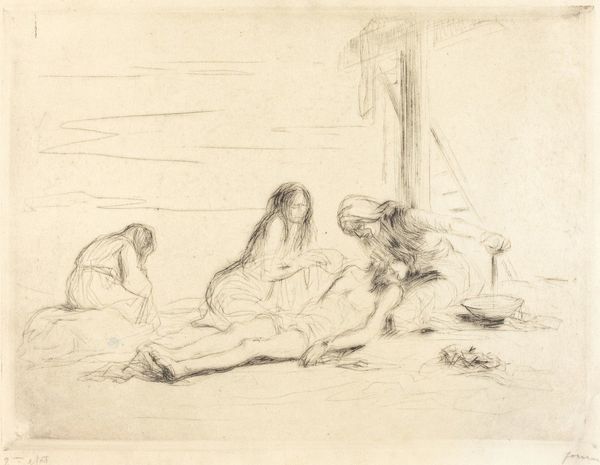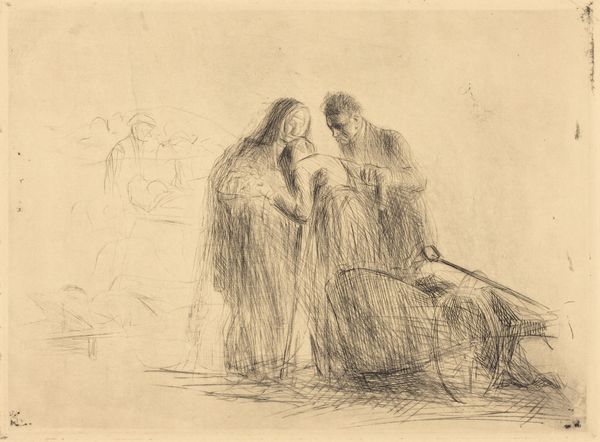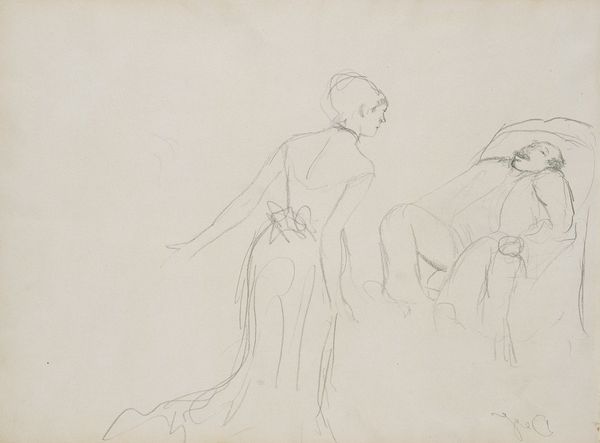
drawing, pencil
#
portrait
#
drawing
#
pencil sketch
#
landscape
#
pencil
#
realism
Copyright: Public Domain: Artvee
Jean-François Millet created this sanguine drawing of a newborn calf in nineteenth-century France. It depicts peasants carrying a calf on a stretcher, the mother cow lingering in the background. Millet was part of a group of artists interested in Realism, focusing on the lives of rural laborers. He sought to portray these communities as dignified and virtuous, but his work also commented on the stark realities of rural life. His art can be seen in relation to broad changes in French society, especially the revolutions of 1830 and 1848 and the rise of socialist politics. At the time, the École des Beaux-Arts favored history painting and idealized subjects. How did Millet's art challenge academic norms and reflect social changes? To answer this, we can examine exhibition records, political pamphlets, and agricultural reports. The meaning of art is not fixed, it's revealed by historical context.
Comments
No comments
Be the first to comment and join the conversation on the ultimate creative platform.

